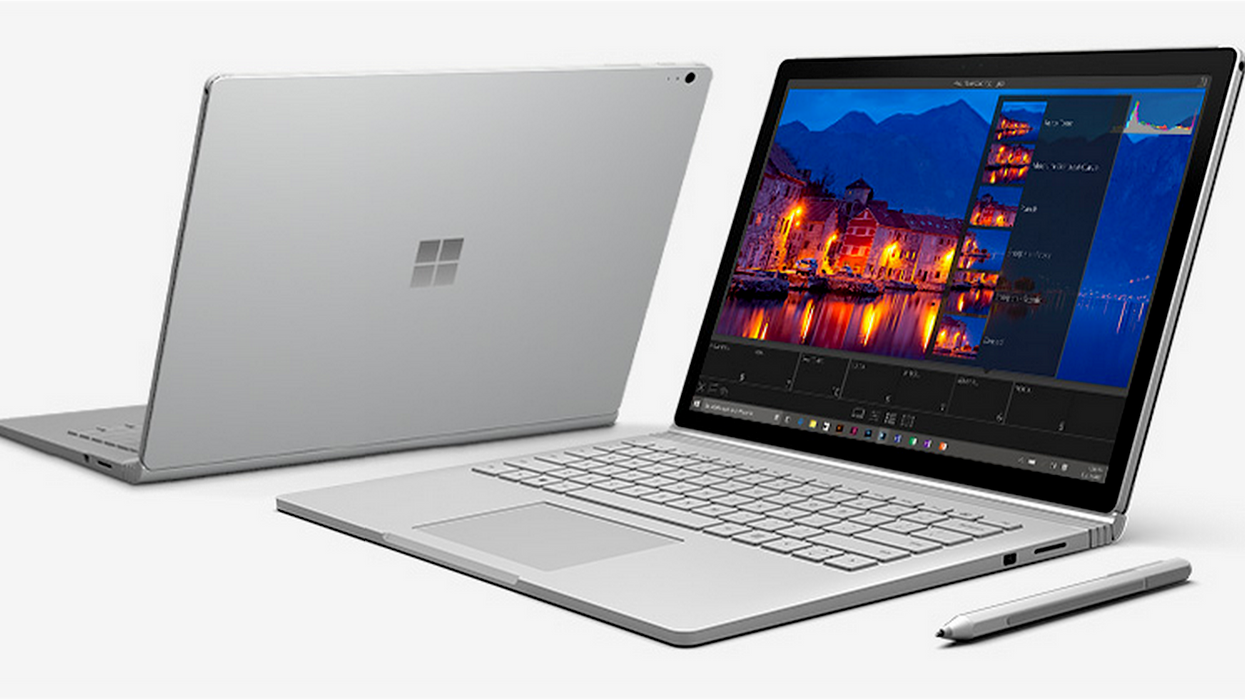The Microsoft Surface Book Is a Windows Laptop You'll Actually Want to Use for Editing
Microsoft product launches generally don't get much love from NFS. The new Surface Book, however, is definitely worth talking about, particularly for editors.

What is the Surface Book, you're probably asking yourself? In essence, Microsoft went all out to create a flagship laptop/tablet hybrid with high-end hardware and innovative design, all centered around the completely refreshed Windows 10 operating system. Basically, Microsoft built a laptop for people who need powerful machines to get shit done. It's the Macbook Pro of Windows laptops, but it's also quite a bit more than that, thanks in no small part to the detachable tablet display.
So let's start with the basics. The Surface Book is equipped with a fantastic 13.5-inch IPS display, coming in a resolution of 3000x2000 and a PPI of 267. This makes it comparable, and even favorable, to the Retina Displays on the 13-inch Macbook Pros. These machines are also given Intel Skylake Core i5 and i7 processors, depending on which configuration you choose, as well as dedicated NVIDIA GPUs in the higher end configurations. Add to that either 8GB or 16GB of RAM, and it's clear that Microsoft has put some serious computing power into these new machines.
With all of that said, the pricing structure for the Surface Book can only be described as premium. The base model — with an i5 processor, 8GB of RAM, 128GB of storage, and no dedicated GPU — comes in at $1500. When you start adding in the higher-end hardware like the i7 processors, dedicated GPUs, and more memory, that price starts to climb rapidly, going all the way up to $3200 for a version with 16GB of RAM, a 1TB SSD, an i7 processor, and the dedicated GPU.
For more details on the features and performance of the Surface Book, here's the video portion of Tom Warren's review for The Verge:
So now let's talk about the Surface Book's potential as an editing laptop, and why it stands out from other comparably-priced machines. First and foremost is performance. With hardware like this, particularly if you opt for one of the higher spec machines, you should be able to edit 4K video to your heart's content, do some light to medium compositing and color work, then export everything in reasonable time. It is a relatively high-end laptop, and you should expect it to perform like one.
Another aspect of these machines that should excite editors is that display. In all of the reviews that I've come across thus far, the overwhelming consensus is that the display is far and away the best aspect of this device. Many are even going so far as to say that it's hands down the best display in a device of this size, thanks to its high resolution and wide color gamut. Of course, you'd have to adjust to the somewhat unorthodox 3:2 aspect ratio, but my guess is that the extra vertical screen real estate would be beneficial for certain applications.
Next up is the touchscreen aspect of this device. While touchscreens typically aren't used for video post production purposes, that's largely because most editing and compositing softwares don't support touch gestures, and most computers/tablets with touchscreen functionality aren't powerful enough to run professional software.
In Adobe's latest update, Premiere Pro, After Effects, and Character Animator all implemented some variation of touch gestures and interactivity into their interfaces. Adobe seems to be counting on the idea that more and more computers will have touchscreens as we move into the future, and they're trying to give more tactile ways to interact with their software.
While there are definitely other Windows-based touchscreen computers and tablets out there, the Surface Book is among the first that you would actually want to use for serious video production (thanks to the significantly higher specs and dedicated GPU). As for how and why you'd incorporate the touchscreen into an editing workflow, my inclination is that it would be great for skimming through media, marking ins and outs, and building simple rough cuts. Of course, you'd probably still want to do the majority of the editing and fine tuning with a mouse, rollerball, or keyboard, but the rough cutting process could be fun and tactile with a touchscreen.
So there you have it, a Windows laptop/tablet that presents an intriguing portable option for editors. It's certainly not inexpensive, but professional machines rarely are.
Now I'd like to hear from you. Does the Surface Book represent a worthwhile proposition for video editors and filmmakers? Let us know down in the comments!
Source: Microsoft












